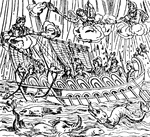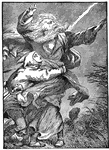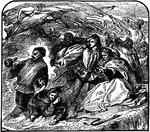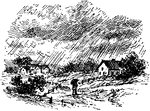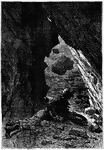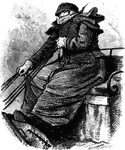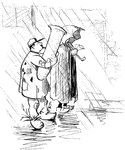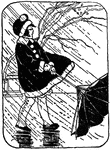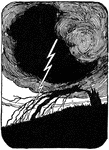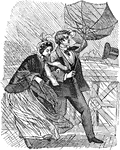
Evacuation of Corinth
Evacuation of Corinth, Mississippi- Confederate fortifications, from the northern angle, looking south-…
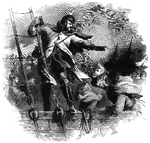
Burnside Expedition
"Burnside Expedition- the fleet and transports off Hatteras during the storm- the general giving orders.…

Battle of Winchester
"Battle of Winchester, VA., March 23rd, 1862- decisive bayonet charge of the Federal troops, led by…
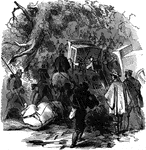
March of General Banks
"Incident in the march of General Banks's Division during a storm in Western Maryland." — Frank Leslie,…
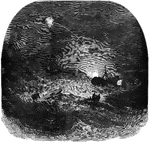
Monitor
"Loss of the Monitor- gallant attempt of the officers and crew of the United States steamer…

Battle of Stone River
"Battle of Stone River, Tenn. Decisive charge and capture of Byrne's Confederate battery by the Seventy-eighth…

Fort Hindman
"The investment of Fort Hindman, Arkansas Post, Ark., by the Federal troops under General McClernand,…
!["Capture of Fort De Russy, La., on the 14th of March, 1864, by the Federal forces under General Andrew Jackson Smith. This fort was captured, March 14th, 1864, by the Federal forces under General A. J. Smith. The expedition left Vicksburg on March 10th, landed at Summerville, La., on the 13th, and marched to Bayou Glace, where General Scurri's Confederate brigade had been encamped, which fled on the approach of the transports, leaving considerable camp equipage and commissary stores. General Smith pushed forward to Yellow Bayou, where strong fortifications had been erected; but the Confederates again fled. As he came up the enemy was pressed, and some skirmishing occurred, resulting in the capture of several prisoners and a small wagon train. At daylight the entire command started for Fort de Russy, twenty-eight miles distant, hotly pursued by General Dick Taylor, who hoped to save the fort; but Smith had the lead, and at four o'clock in the afternoon the Third and Ninth Indiana Batteries opened on the fort, which replied vigorously with three of its heaviest guns. The cannonade continued an hour, when General Smith ordered the First and Second illinois Regiments, Sixteenth Corps, under General Mower, to charge the enemy's rifle pits and storm the fort. The Eighty-ninth and One Hundred and Nineteenth Indiana and Twenty-fourth Missouri Regiments charged over deep ditches and a thick abatis in the face of a galling fire, and within twenty minutes after the order was given the [African American] sergeant of the Fifty-eighth Illinois Volunteers planted the American flag upon the enemy's works."— Frank Leslie, 1896](https://etc.usf.edu/clipart/11700/11750/derussy_11750_mth.gif)
Fort de Russy
"Capture of Fort De Russy, La., on the 14th of March, 1864, by the Federal forces under General Andrew…

Battle of Ream's Station
"The Siege of Petersburg. Battle of Ream's Station- the attempt of the enemy to regain the Weldon Railroad…
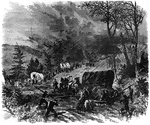
Campaign in Georgia
"The campaign in Georgia. A baggage train crossing the mountains in a storm. General Sherman, after…

Fort Fisher
"First assault upon Fort Fisher, Sunday, January 15th, 1865. The One Hundred and Seventeenth New York…

Oswego Harbor
View of Oswego Harbor, 1848. This view is from the top of the United States Hotel, looking east-northeast.…
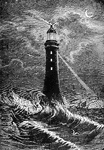
Eddystone Lighthouse
"Eddystone is a group of gneiss rocks, daily submerged by the tide, in the English Channel, 9 miles…
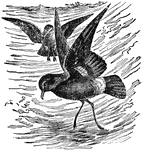
Stormy Petrel
"Petrel is a popular name for certain small oceanic birds of dusky plumage, nocturnal in habit, widely…

Antenna
"The yard of a ship. The ships of the ancients had a single mast in the middle, and a square sail, to…
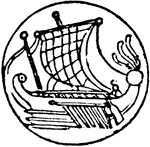
Antenna
"The yard of a ship. The ships of the ancients had a single mast in the middle, and a square sail, to…

Locust
"The locusts come down in swarms of millions from the warm lands of southern Brazil. There are so many…

Dust Storm
A storm composed of sand. It occurs when the air over the sand becomes hot, and rises. The differences…
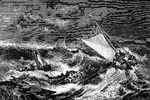
The Shipwreck
The romantisit, J. William Turner, was famous for his drawings and watercolors. This painting expresses…
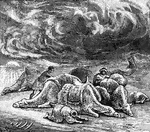
Sand Storm in the Desert
During the prevalence of the simoom, particles of fine sand are carried into the atmosphere and obscure…
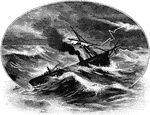
A Storm at Sea
Storms are violent disturbances of the ordinary equilibrium of the atmosphere by wind, rain, snow, hail,…
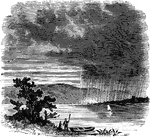
Primary Forms of Clouds: Nimbus and Stratus
A Nimbus, or Storm Cloud, is any cloud from which rain falls. The Stratus, or Layer Clouds, form in…

Line squall
"The warmer current ascends, as indicated by the small arrows, and curls at the black wreath (u) of…
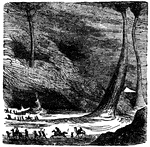
Simoon Storm
Strong dust storms that move in a circular motion. They mostly occur in deserts such as deserts found…
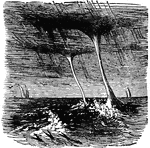
Waterspouts
"Waterspouts are whirlwinds occurring on the sea or on lakes. When fully formed they appear as tall…
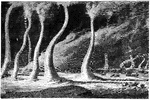
Sand-Storm in the Desert
A dust storm or sandstorm is a meteorological phenomenon common in arid and semi-arid regions and arises…

St. Alban's Monastery Gate
This is the only building to survive. It was built c.1365 after its predecessor had been destroyed in…
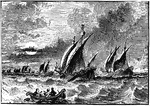
Fourteenth Century Ships
In the 14th and 15th centuries seamen's guilds were formed in Bristol, King's Lynn, Grimsby, Hull, York…

Group Caught in Rain
An illustration of a group of men and woman caught in a rain storm sitting on a fence huddled under…
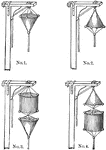
Canadian Storm Signals
"Canada Storm Signals. These signals, if displayed by day on lakes Superior, Erie, or Ontario, indicate:…

A Man and a Boat on a Ship
A scene from the book The Young Wrecker, showing the hero Fred Ransom as he "plunged into the arms of…
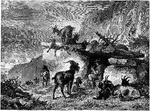
Goatherd's Hut
A goatherd or a goat herder is a person who herds goats for a living. Similar to a shepherd who tends…

Storm Petrel Swimming with Reflection
The storm Petrel "of the Mediterranean and North Atlantic from Greenland to South Africa, which breeds…
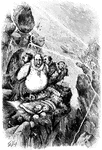
Tammany Ring as Vultures
Nast depicts New York corruption with the Tammany Ring as vultures waiting for the storm to blow over.…
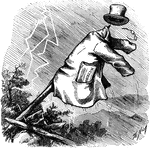
Greeley's Coat and Hat
Horace Greeley's storm battered coat and hat from "something that will blow over."
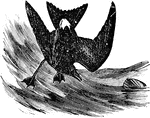
Leach's Petrel
"Cymochorea leucorrhoa. Leach's Petrel. White-rumped Petrel. Coloration as in the last species (pygmy…
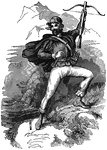
William Tell
William Tell was known as an expert marksman with the crossbow. At the time, Habsburg emperors were…
Section of Field and Lateral Ditch
"From the reservoir, whether constructed on a large scale to hold storm water or of small size to receive…

'Tis All for the Best
The picture describes a story about a traveler who encounters a terrible storm and because he cannot…
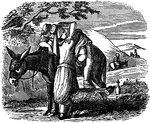
A Friend in Need, is a Friend Indeed
"Not when the Sun of Fortune o'er us shines, / And flattery's tongue, with honeyed words, beguiles,…
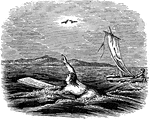
Man's Extremity, is God's Opportunity
"The ship is wrecked upon a rocky coast, / And all the sailors but these two are lost; / As one is sinking…
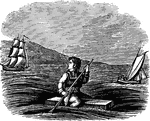
Hope for the Best, Prepare for the Worst
"The ship is sunk - he's wrecked at last at sea, / His life to guard in his extremity, / He binds around…
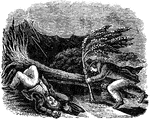
Better Bend than Break
"The tempest howls, the winds tremendous blow, / Whate'er bends not will surely be laid low: / Ofttimes…
